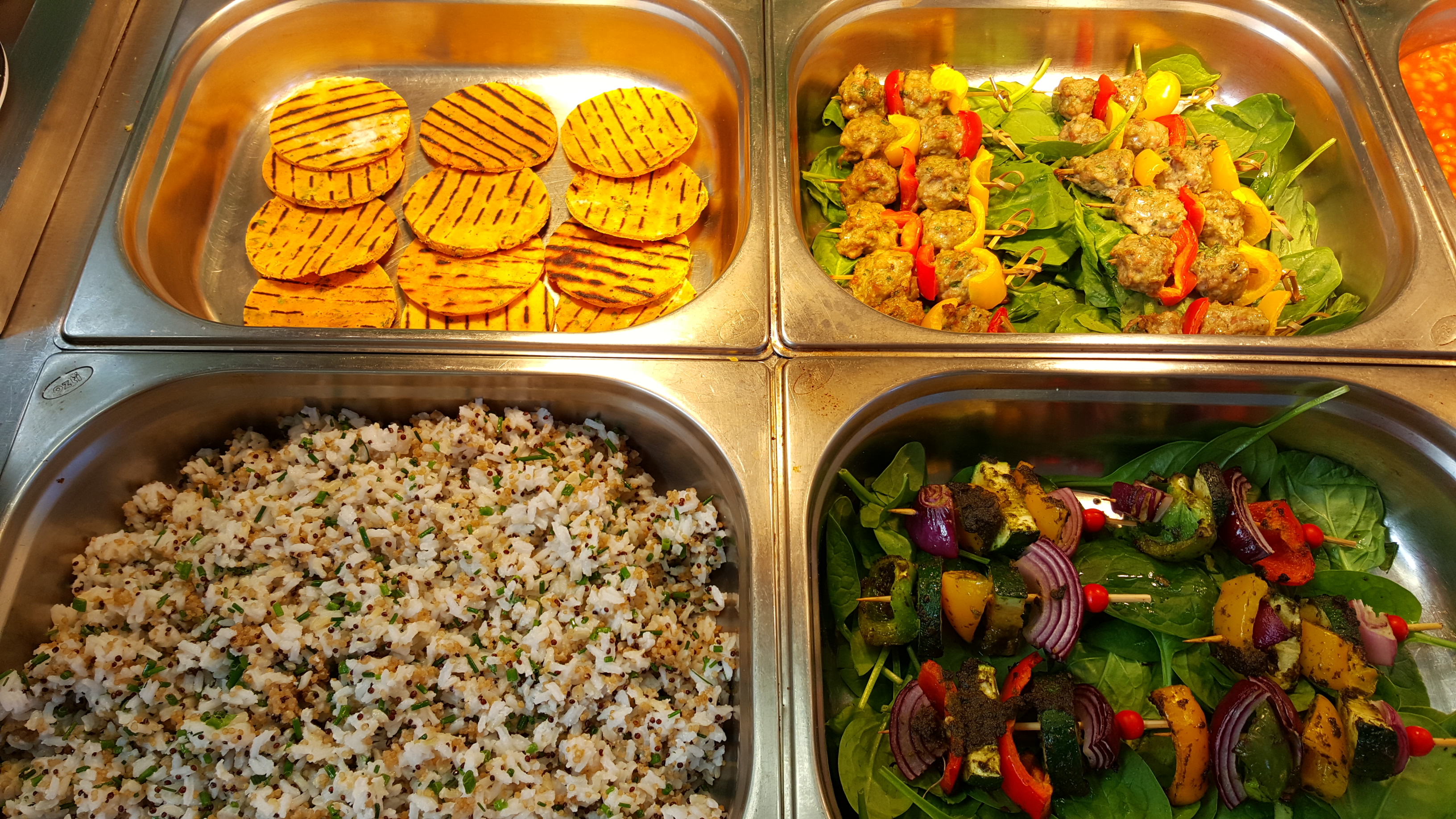03 March 2022
What if Food was a key pillar of learning in all schools?

by Florence Pardoe
In the Food Environments: What If? blog series we'll be looking at real life examples of the way in which the food environment could be changed to facilitate better food choices and ask the question "what if it was different?"
Kosi is beaming with pride. Chef Matthew, Catering Manager and Head Chef at Hillstone Primary, has just served up Jollof rice as part of lunch and it’s a hit with the pupils. It’s a traditional dish from Nigeria, Kosi’s home country. Kosi is 10 and hasn’t lived in Birmingham long, he is still learning English and his lack of confidence means he is often shy and withdrawn at school. But today, he stands in front of his attentive peers proudly sharing his food culture. Chef Matthew put Jollof on today’s menu after Kosi told his class about his favourite dish from home in a conversation about food and culture in Mr Bennett’s classroom.
At Hillstone, food is one of five pillars of learning, it is central to life and learning. The children don’t just come into the canteen to eat, they come in to learn. They may be cooking flatbread as they study Ancient Egypt, designing a Spanish Omelette and dining on tapas when studying Spanish culture or making potato cakes whilst learning about Judaism. All the children cook regularly through their time in school, and there’s not a cupcake in sight.
Out in the school allotment, a class are learning about seeds and soil as they plant beans and herbs. In a few months’ time they’ll be harvesting the crops to sell at the school Farmer’s Market. They hold a market once every half term, with fresh produce on sale at cost price and a delicious hot meal available at £1.50. At one special market every year, much of the produce on offer has been made by the students themselves from their own crops.
At 11 o’clock, Matthew is preparing lunch, with a small team to help him serve and set up. Much of the produce and ingredients has come from local producers. Matthew, as an independent Catering Manager, has full control over his suppliers and prioritises local, seasonal and sustainable produce. Every day the students have a choice of three dishes, two of which will be vegan or vegetarian although they aren’t advertised as such; there is only 1 student that identifies as vegetarian. Up to 60% of students usually choose a vegetarian option though, simply because they are delicious. For most of them, school food has always been this way.

Matthew began making these changes in 2015, when he was first employed by Hillstone Primary School. As the approach to food at the school changed, parents and pupils were consulted, invited to contribute in menu design, to dine and taste new dishes at the canteen; practices which continue at the school today. Matthew’s meals are healthy, balanced and truly delicious and come in at £2.10 per pupil.
How has a school in a deprived ward of Birmingham, with 50% of students qualifying for Free School Meals, achieved this?
No school could reach this point without dedicated leadership that truly values the importance of food in childhood development. Gill Sparrow is the dynamic, ambitious Headteacher at Hillstone, who has been instrumental in this transformation. Gill is the first to admit that she had no idea how different school food could be in 2015, when she was exploring new food options as the school became an academy. It was then that she met Rachel Chalal, at that time Headteacher at Oval School. Rachel is a school food trailblazer, she had transformed the food offering at Oval School, going above and beyond, achieving a Food for Life Gold Standard to become a flagship school. She is now Associate Leader for School Improvement at Gossey Lane Academy, part of the Washwood Heath Academy Trust, where she is working on a food strategy to expand across all five schools in the trust.
Gill was inspired by Rachel’s work. She was fortunate to have a Business Manager that also recognised how transformative a new approach could be to the lives of the children. She allocated budget towards a new role – Catering Manager. Matthew Knight is an experienced professional chef with a passion for health and environment. As he brings idea after idea to Gill, not only does he improve the health and lives of the children he feeds (obesity has fallen by 1% across the school), and shaped their lifelong attitude to food, he generates further revenue for the school, through meals offered at parent’s evening, after school club, at the markets. And, of course, through their high uptake of school meals.

What if all school food was like this?
Translating the work of the Rachels, Matthews and Gills of school food into a scalable model that could be adapted and applied to primaries and secondaries with differing management/ownership models across the nation is not an easy task. At a school level, the key ingredients are vision, leadership and talent. And, of course, access to resources. So, what are some of the ingredients needed at a national level?
- Financial support for schools to invest in transforming school food and food education
- Opportunities for trailblazing senior leadership to present and inspire Headteachers across the country
- Learning networks and training opportunities for school canteen staff and teachers
- Mandatory inclusion of food in the curriculum from Early Years to school leaving age
- Recognition of Catering Manager as a highly skilled profession, with catering colleges and universities promoting this as a career path
- Design and test school menus and better eating environments for secondary schools – with input from young people that align with school food standards
- Dynamic procurement systems that allow schools and catering companies to source food from local suppliers
- Better government school food standards and more stringent enforcement
And there are a number of other policy recommendations The Food Foundation makes relating to school food in the Childrens’ Right to Food Charter that go beyond these ingredients.
Changing the way young people eat is much easier at primary school age. Any change at secondary school level will need to be incremental and inclusive of pupils, and no doubt will be met by resistance at best, and revolt at worst! But not improving school food is not an option.
Schools like Hillstone and Oval are changing the trajectory of children’s lives through food, and the ripples made through food education at school may have profound effects on and beyond our food system, from public health, to the local food economy’s health, to planetary health. And with continued energy and commitment from pupils and parents to public servants and policy makers, they can go from being the exception to the rule.



